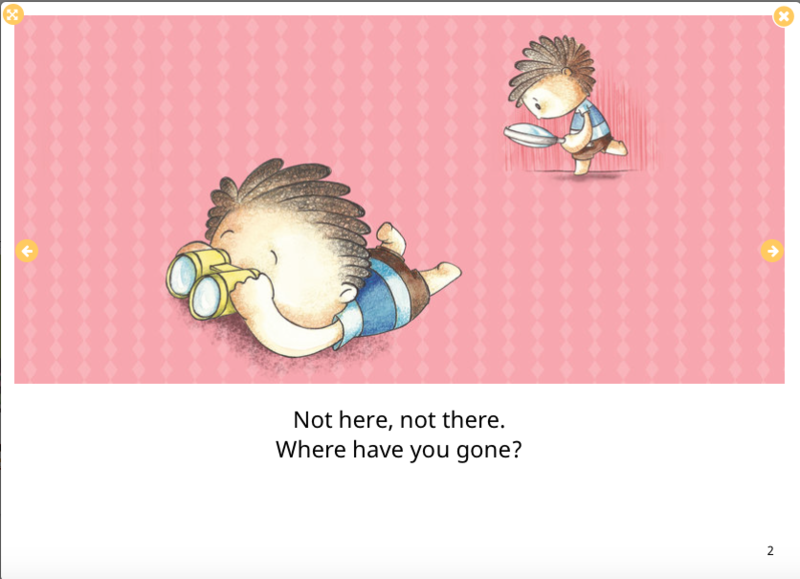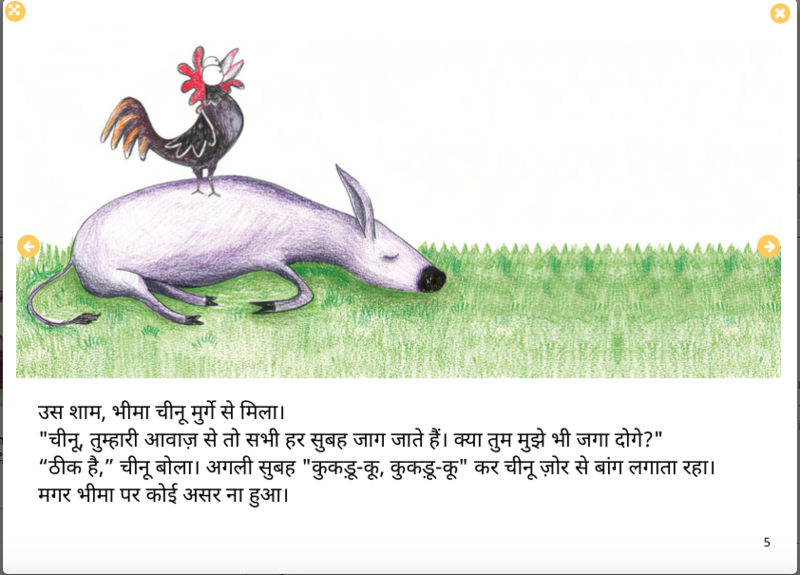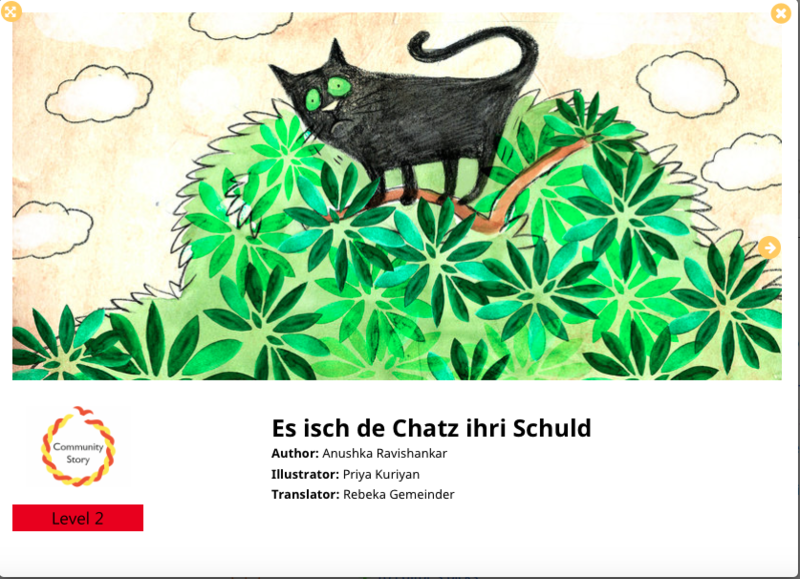WOOHOO! Ten thousand stories on StoryWeaver!
Posted by Pallavi Krishnan on December 06, 2018StoryWeaver has achieved a new milestone by adding 10,000 stories to the platform! When we launched StoryWeaver in September 2015 with 800 stories in 24 languages, we really couldn't predict the tremendous reception the platform has had, not just in India but around the world.
We couldn’t have done it without you, our amazing community! So, a big big THANK YOU to all of you. It's your stories, your translations and your unwavering belief that all children should have access to joyful stories that have helped us achieve this milestone. Without your support and goodwill we wouldn't be where we are or having so much fun doing what we do!
Today, with 10,000 stories in 122 languages, StoryWeaver is truly a global repository of multilingual stories. We hope you continue to support us on our journey and bring more stories in more languages to children around the globe.
To celebrate this milestone we are running a little contest on Twitter, Facebook and Instagram. Do check it out!
Here’s to the next 10,000! Onward and upward!
comments (4)Pratham Books Retell, Remix and Rejoice 2017 is here!
Posted by Amna Singh on April 06, 2017Our annual Retell, Remix and Rejoice contest is back… with a small twist! This year :
-
You can choose from the whole universe of illustrations on the StoryWeaver platform and
-
You have to create an engaging story for young reader (A level 1 or 2 book. More details below)
A recent report ‘Mapping Children’s Literature in India’ by the Sir Ratan Tata Trust and Parag revealed a huge shortage of quality stories for our youngest readers (0-6 years), especially in Indian languages. We want your help in creating joyful stories for the next generation of bookworms to read, giggle and wonder at in English, Hindi, Kannada, Marathi or Tamil. We asked Pratham Books’ editors to share the themes they felt engaging stories were most needed in. This is what they would like you to weave stories about:
-
My body: Parts of the body, sensations, growing up.. Take a look at Rohini Nilekani’s ‘Listen to my Body’.
-
My friends: Games we play, sharing, fighting, making up, being fair. Have you read ‘मेरा घर’ by Rukmini Banerjee.
-
Animals around us: My pets, domestic and wild animals, birds and insects. ‘Ammu's Puppy’ by Sowmya Rajendran was one of the big hits of 2016 on StoryWeaver
-
Travel: Using modes of transport in stories, visiting new places and culture, etc. Check out 'My Car' by Phidi Pulu.
-
People around us: My teachers, shopkeepers, drivers, fruit-sellers, ice-cream wala, the gardener, mechanic, etc. Here's 'Phani's Slippers' by Sridala Swamy.
-
The world around me: Weather, nature, seasons, trees and flowers, every day science Have you read 'The Red Raincoat' by Kiran Kasturia.
About our Reading Levels
At Pratham Books we link levels to the child’s reading development, since we know 10-year-olds who are most comfortable with a Level 1 story, as well as 6-year-olds who can read Level 3 stories effortlessly. This happens across languages, too, as kids have different fluencies in different languages.
This year we’re asking you to be as creative as you can and convey as much as you can - using as few words as possible. Use our reading level guidelines as you create them.
Level 1 Books
- Easy words, word repetition
-
Short sentences, less than 5 on a page
-
Text and pictures should support each other
-
Big fonts
-
Rhyme and rhythm
- Word range: 0 to 250

Level 2 Books
- Simple concepts (especially in non-fiction)
-
Stories with linear, engaging plots
- Word range: 250 to 600

Guidelines for Submission
Timelines:
Contest ends on April 30, 2017.
Copyright and other guidelines
- All stories submitted must be your original work.
-
Stories must be in English, Hindi, Kannada, Tamil or Marathi.
-
Participants must be over the age of 17 to participate (we’re organising an exciting contest for children later in the year)
-
By submitting your work to Retell, Remix and Rejoice 2017, you are agreeing to a CC-BY license being applied to it (This license lets others distribute, remix, tweak, and build upon your work, even commercially, as long as they credit you for the original creation). To know more about CC-BY, click here.
-
For queries, write to us at [email protected]
-
While we encourage participation from all countries, prizes shall be couriered only within India.
How to enter
You can submit your story for Retell, Remix and Rejoice 2017
-
using illustrations from our image bank
-
by uploading your own illustrations
-
or as text only
Here’s a quick video tutorial on how to create stories on StoryWeaver.
However you choose to create your entry it MUST be via the Retell, Remix and Rejoice contest page, by clicking on the button below:
Oh and before you go… here’s a quick reminder of the prize this year
The three best manuscripts will receive detailed feedback from our Senior Editors at Pratham Books. One of the finalist entries will be chosen for re-illustration by a children’s book illustrator.
comment (1)Chochichäschtli? What is that???
Posted by Remya Padmadas on February 20, 2017Rebeka Gemeinder’s mother tongue is Swiss German (Alemannisch), a language spoken in Switzerland, Austria, Germany and Liechtenstein. Unfortunately the language is spoken in increasingly decreasing circles every day. Rebeka writes about what her mother language means to her.
If you have no clue, you never visited the beautiful but small country in the middle of Europe called Switzerland. It is a country comparable to a chameleon not just regarding nature and people, but the languages spoken here are of an unbelievable variety. Our four official languages are French, Italian, Rhaeto-Romanic and German.
But, to be honest, we don’t speak German. We have our own dialect which we are proud of. Many linguists identify the Swiss German dialect even as a language in its own right. Every canton, every valley, city or even village has its own words and ways of pronunciation. Therefore, at school – from kindergarten up to university – the dialects get replaced by German. It’s a pity. A wonderful language full of tradition and common dreams and aims becomes lost.

Let’s change that! Save our mother languages! By telling stories to your children, you can take the first step. Your child will pass the language on to his child and so it can’t disappear! My parents read a story with me and my siblings every evening. Oh, how much I enjoyed that! Then, of course, I read books on my own and in every language except German. But now, now I realise that my mother tongue is not just a language. It means home.
After travelling a lot and speaking in English, French, Mandarin and Italiancoming home and not thinking about every single word, feeling free, confident and understanding inside jokes is just wonderful. Let’s keep our individuality, our passion, our pride and let’s save the feeling of being at home.
Swiss German is important. It’s a part of our history and it lets our hearts beat for an amazing country with a huge potential.
And if you still need an answer to the starting question: a Chochichäschtli is just a kitchen cabinet !
Happy Mother Language Day!
Be the first to comment.
